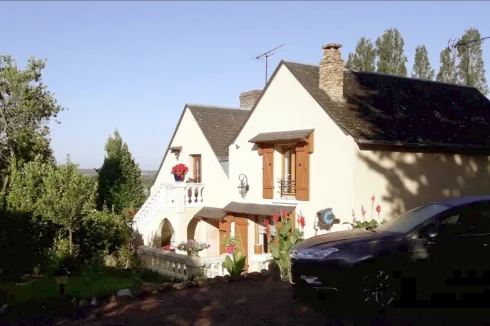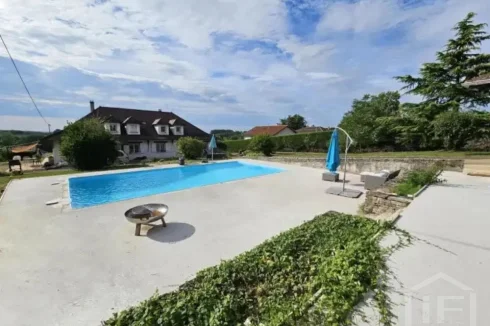MOT Vehicle Tests Toughened in France
Tuesday 09 January 2018
The French MOT test is being tightened up this year, alongside an increase in the charge and penalties.
The regulatory vehicle contrôle technique in France is one that must be carried out every two years at an accredited control centre - a centre de contrôle technique agréé. The twin objectives of the test are vehicle safety and pollution control.
In order to comply with a European directive, from 20th May 2018 the checklist for the test is to be increased from 124 to 132. Many of the checks will also be subject to more detailed examination, with 606 points of control, against 453 under the current system, an increase of 34%.
The test failures are also to be divided into three categories, where presently there are only two. The first is a list of 139 minor failures, the second 340 major failures, and a new category of 127 ‘critical’ failures - 'défaillances critiques'.
The new category concerns those points presenting a direct and immediate danger to road safety, or having a serious impact on the environment.
Examples of such points given in the European legislation are insufficient pressure in the braking system, external damage to the brake system, brake fluid leakage, electrical wiring that may touch hot or moving parts, tire treads that do not conform, corrosion of the chassis reducing its resistance, probable dropping of bumper parts or side shields, poorly closed door or seat insecure.
At the present time, where a major defect is found an owner is given two months to get it repaired, during which time they may continue to use the vehicle on the road.
In future, where a critical defect is found, a sticker will be placed on the windshield of the vehicle car and you will only be able to use it on the road for the rest of the day, save for being permitted to drive the vehicle to a garage for repair within 24 hours of the test. The penalty for breach of this rule is a €135 and immobilisation of the vehicle.
The control centres do not themselves undertake repairs, being strictly prevented from doing so by law.
Given that it may not be easy to find a garage to undertake immediate repair, it can be anticipated that many owners are likely to take the risk of a fine and book the car in for repair at a later date. This is certainly more likely where the inspection has thrown up defects which are both 'major' and 'critical'.
However, the two-month period to rectify defects and return for a later examination of the repair (contre-visite) remains in place; you are simply not allowed to use the vehicle on the road the following day. Where only minor or major defects are found, you will still be allowed to use the vehicle for up to two months.
The charges imposed by the test centres are not controlled by the government, and currently cost anything between €60 and €100.
With the increased number of checks and longer duration of the test, and new training requirements for technicians, the charge is expected to rise by up to 20%, although in many areas of the country the competition between the centres is strong and it remains to be seen if this is reflected in the new charge.
As to the second visit following repair, these are sometimes offered free of charge by some test centres, although others charge up to €20. It may well be that this charge will more systematically be imposed in the future.
In order to comply with a European directive, from 20th May 2018 the checklist for the test is to be increased from 124 to 132. Many of the checks will also be subject to more detailed examination, with 606 points of control, against 453 under the current system, an increase of 34%.
The test failures are also to be divided into three categories, where presently there are only two. The first is a list of 139 minor failures, the second 340 major failures, and a new category of 127 ‘critical’ failures - 'défaillances critiques'.
The new category concerns those points presenting a direct and immediate danger to road safety, or having a serious impact on the environment.
Examples of such points given in the European legislation are insufficient pressure in the braking system, external damage to the brake system, brake fluid leakage, electrical wiring that may touch hot or moving parts, tire treads that do not conform, corrosion of the chassis reducing its resistance, probable dropping of bumper parts or side shields, poorly closed door or seat insecure.
At the present time, where a major defect is found an owner is given two months to get it repaired, during which time they may continue to use the vehicle on the road.
In future, where a critical defect is found, a sticker will be placed on the windshield of the vehicle car and you will only be able to use it on the road for the rest of the day, save for being permitted to drive the vehicle to a garage for repair within 24 hours of the test. The penalty for breach of this rule is a €135 and immobilisation of the vehicle.
The control centres do not themselves undertake repairs, being strictly prevented from doing so by law.
Given that it may not be easy to find a garage to undertake immediate repair, it can be anticipated that many owners are likely to take the risk of a fine and book the car in for repair at a later date. This is certainly more likely where the inspection has thrown up defects which are both 'major' and 'critical'.
However, the two-month period to rectify defects and return for a later examination of the repair (contre-visite) remains in place; you are simply not allowed to use the vehicle on the road the following day. Where only minor or major defects are found, you will still be allowed to use the vehicle for up to two months.
The charges imposed by the test centres are not controlled by the government, and currently cost anything between €60 and €100.
With the increased number of checks and longer duration of the test, and new training requirements for technicians, the charge is expected to rise by up to 20%, although in many areas of the country the competition between the centres is strong and it remains to be seen if this is reflected in the new charge.
As to the second visit following repair, these are sometimes offered free of charge by some test centres, although others charge up to €20. It may well be that this charge will more systematically be imposed in the future.
Related Reading:
Thank you for showing an interest in our News section.
Our News section is no longer being published although our catalogue of articles remains in place.
If you found our News useful, please have a look at France Insider, our subscription based News service with in-depth analysis, or our authoritative Guides to France.
If you require advice and assistance with the purchase of French property and moving to France, then take a look at the France Insider Property Clinic.





